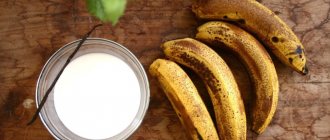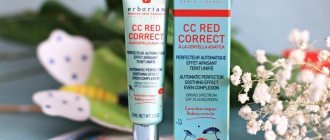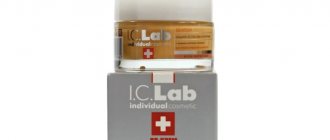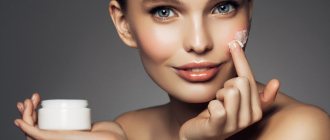What is modern cosmetics? Sadly, most often it is a mixture of chemistry, packaged in a bright and catchy box, which naturally attracts attention. But, before you fall for the picture and purchase this or that product, carefully study its composition. Only ecological cosmetics are considered useful and healing.
If the product you are looking at is not one of these, you will find on the packaging (in the “composition” column) many incomprehensible words denoting chemical elements. It is better to refuse such a remedy. Moreover, there are many natural ingredients that are excellent cosmetics. You don’t have to pay fabulous sums of money for them, and you won’t find a single chemical element in their composition. They very carefully and wonderfully care for the skin, hair, body, and also promote natural tissue renewal.
Photo 1. White clay - kaolin, which has a wonderful effect on hair and skin
Such natural remedies include white clay. We'll talk about her. It is perfect for skin and hair care . It has long been actively used in spa salons. Moreover, kaolin is designed to combat skin problems such as acne and spots. This is not an expensive component at all. Clay masks can be purchased at pharmacies or prepared at home. You will see: once you try kaolin-based products on yourself, you will no longer be able to refuse them.
Recipes for acne: general rules for applying cosmetic clay masks to the face
Since clay is a specific natural substance, there are some nuances in applying it to the skin. Follow simple rules:
- Experts recommend sifting the clay before preparing the mask. This will saturate the product with oxygen and increase the effectiveness of the procedure.
- Apply the mask to a thoroughly cleansed face.
- When applying, avoid the sensitive area around the eyes and lips.
Do not allow the mask to dry out completely or crack. - After applying the mask to your face, it will begin to harden and crack. To prevent this, carry out the procedure in conditions of high humidity (for example, while taking a bath) or irrigate your face with thermal water as the mask dries.
- Do not use soap to wash off clay. Warm water and your own fingers or a clean cosmetic sponge are better.
Peeling mask made of blue clay and badyagi
Ingredients:
- blue clay – 1 tbsp. l.;
- badyaga (powder) –1 tsp;
- warm water - 1 tbsp. l.
Preparation and application:
- Mix all ingredients until smooth.
- Apply with light massaging movements to thoroughly cleansed facial skin for 12–15 minutes.
- Rinse off with cool water.
Thanks to the healing effect of clay and badyagi, the skin smoothes out, acquires a healthy complexion, and acne and congestive spots gradually disappear. It is recommended to repeat this mask no more than once a week. The course of treatment is 10–15 procedures.
Note! It is forbidden to make masks with badyaga in the summer when the sun is active. The substance may cause photosensitivity and lead to the formation of persistent pigment spots.
Refreshing mask with blue clay and cucumber juice
Ingredients:
- freshly squeezed cucumber juice – 2 tsp;
- lemon juice - 2 drops;
- blue clay - 2 tbsp. l.
Dilute the clay in cucumber juice, add lemon juice and spread evenly over your face. Hold for 17–20 minutes. It is recommended to carry out a course of 10 masks, performed 2-3 times a week.
Anti-blackhead mask
Ingredients:
- white clay - 2 tbsp. l.;
- egg yolk - 1;
- honey - 1 tsp;
- olive oil - 1 tsp.
This mask literally pulls out deep comedones from the skin.
Beat the yolk, add honey and butter, mix with white clay. Apply to skin for 15–20 minutes. Perform the procedure every week, a course of 5 procedures. After 2–3 months, treatment can be repeated.
Cleanser with aspirin for clogged pores
Ingredients:
- white clay - 1 tsp;
- aspirin (acetylsalicylic acid) - 2 tablets.
Preparation:
- Grind aspirin tablets to a powder.
- Add clay and a little warm water, thoroughly stir the mask, which should acquire the consistency of sour cream.
- Apply to the nose, forehead, chin and other problem areas on the face and leave for 10 minutes.
This mask can be used as an express product for cleansing heavily contaminated pores.
Cleopatra mask
Ingredients:
- white clay - 1 tbsp. l.;
- green (yellow) clay - 1 tsp;
- peach or almond oil - 2 tsp.
Mix all the required ingredients, add a little boiled water if necessary. Apply to face, avoiding the eye area, for 10-15 minutes once a week. For the best effect, you will need a course of 5 procedures.
This mask cleanses pores well, relieves inflammation, and refreshes the complexion.
Anti-rash mask for mature skin
Ingredients:
- pink clay - 1 tbsp. l.;
- sour cream (15–20% fat) – 1 tbsp. l.;
- honey - half a teaspoon;
- fresh lemon juice - 1 tsp.
The mask is prepared as follows:
- Heat the sour cream in a water bath until warm.
- Add clay powder, honey and mix well.
- Gently pour lemon juice into the mixture.
Apply this mask to cleansed facial skin for 10–15 minutes 1–2 times a week. Due to the sour cream in the composition, it does not dry out the skin, and thanks to pink clay, it not only eliminates rashes, but also smoothes out fine wrinkles. The course of treatment is 10 procedures.
Volcanic clay for problem skin: recipe No. 1
Ingredients:
- black clay - 1 tbsp. l.;
- natural wine or apple cider vinegar - 1 tsp;
- tea tree essential oil - 2 drops.
A course of using volcanic clay masks can clear your face of acne.
- Mix all the components of the future mask, if necessary, add a little warm boiled water so that the product acquires the consistency of kefir.
- Apply to the face, especially generously lubricating problem areas with rashes and enlarged pores.
- Hold for 10 minutes.
- Then rinse with cool water and apply anti-inflammatory cream to the skin.
The course of treatment is 5–7 procedures performed once a week.
Recipe No. 2
Ingredients:
- black clay - 1 tbsp. l.;
- dried mint leaves - 1 tsp;
- lemon juice diluted in half with water - 1 tbsp. l.
Grind mint leaves into flour, mix with clay and lemon juice. Apply to skin, leave for 10–15 minutes. Repeat the procedure every week for one and a half to two months.
This mask is perfect for those with oily skin with enlarged pores.
Toning anti-acne mask made of green clay
Ingredients:
- green clay - 1 tbsp. l.;
- grape seed oil - 1 tsp;
- egg white - 1;
- kiwi - 1.
Mash the kiwi with a fork and mix with the remaining ingredients. Apply the mask in a thick layer to the skin of the face. Keep for 15–20 minutes. The course of treatment is 10 procedures, performed 1–2 times a week.
Deep cleanser
Ingredients:
- red clay - 1 tbsp. l.;
- natural finely ground coffee - 1 tsp;
- soda - half a teaspoon.
Mix all dry ingredients and dilute them with warm water to the consistency of sour cream. Apply to skin and leave for 12-15 minutes. Make a mask every week for two months.
Olga Metelskaya spot treatment for acne
Famous cosmetologist Olga Metelskaya shared her recipe for getting rid of acne and blackheads using cosmetic clay. Its effectiveness has been proven by many years of experience and a large number of positive reviews.
A spot treatment based on yellow clay fights acne without drying out healthy facial skin.
Ingredients:
- yellow clay (can be replaced with green) - 1 tsp;
- tea tree essential oil - 1 drop;
- chlorhexidine - 1 tsp.
Mix all ointment components until smooth. Apply the resulting product to the rashes every evening before bed for 3-5 days, and rinse with warm water the next morning. This ointment relieves swelling and redness well, and also quickly dries out a popped pimple.
What to expect?
We found out that white clay against acne on the face and not only helps perfectly, however, it has its own side effects that you need to know about before using it. If you use clay as a mask, be prepared for your skin to become red and dry. Irritation, itching, and peeling may also occur. If these unpleasant consequences do affect you, do not be upset. To avoid them in the future, add a little olive oil to your masks. And after it is washed off the skin, lubricate your face with nourishing cream.
Contraindications and possible harm of clay masks
Despite the fact that clay is a natural material, in some cases its use can be harmful. The use of masks is contraindicated for:
- thin sensitive facial skin;
- allergies to at least one component of the mask (especially honey, essential oils, badyagu, lemon juice);
With the exception of a few contraindications, clay masks are generally well tolerated - abrasions, scratches and other open wounds on the skin of the face;
- individual intolerance
Note! Strictly follow the proportions indicated in the recipes. Increased concentrations of some ingredients can lead to skin irritation and even chemical burns.
What is its use?
White clay has an excellent effect on our skin, whitens and tones it at the same time. Treats acne and its consequences. Using it, you will feel your face become less oily. This is all due to the fact that clay has pore-narrowing properties. After using the mask, you will immediately feel a smoothing effect - fine wrinkles will disappear. In addition, the metabolism in the skin will be restored and the skin will be cleansed. Clay is an excellent antiseptic. As noted above, it can help solve problems such as acne. The effect will be quick and painless. The action of clay perfectly removes toxins, the skin becomes cleaner and less oily. The blood in it begins to circulate much better. However, experts warn: if your skin has too many pimples or blackheads, it is better to avoid white clay. By the way, you can buy a mask at a pharmacy or prepare it at home.
Photo 2. White clay will help you get rid of acne painlessly
White clay belongs to kaolins and is very similar in structure to green clay, but is rich in many trace elements. Hippocrates, in his works dating back to the 4th century BC, described the most valuable properties of kaolin. It was in those days that they began to use it to prepare a wide variety of beauty recipes. Substances such as silica, zinc and magnesium fill white clay. Kaolin masks are very useful because they can cleanse the skin and improve air flow in it. This is a truly universal product because it is suitable for absolutely any skin type and perfectly cures acne.
Composition and beneficial properties of Cambrian clay
Fine rock in dry form is a free-flowing powder, and when water is added it turns into an elastic mass. Cambrian clay is a source of mineral salts and trace elements that help improve skin condition.
It contains many useful components98:
- magnesium (improves the condition of bone tissue, prevents the formation of malignant tumors);
- silver (has a pronounced antibacterial effect);
- potassium (promotes moisture retention in epidermal cells);
- silicon (dilates blood vessels, helps maintain skin turgor);
- iron (stimulates blood microcirculation);
- copper (promotes the formation of elastin and collagen);
- zinc (one of the tools in the fight against skin diseases);
- nitrogen (has a healing and anti-inflammatory effect).
The clay powder contains kelp extract, which increases the tone of the epidermis, as well as titanium oxide and dioxide, which protect the skin from the negative effects of ultraviolet radiation.
Its rich composition is one of the main answers to the question why Cambrian clay is actively used in cosmetology. It has a complex effect on the skin of men and women98:
- improves complexion;
- saturates cells with useful substances;
- activates metabolic processes at the cellular level;
- stimulates blood microcirculation;
- restores skin elasticity and firmness;
- normalizes sebum secretion;
- reduces the number of inflammatory elements of the rash;
- helps fight post-acne, pigmentation, blackheads;
- has anti-inflammatory, antiseptic, antibacterial effects;
- cleanses the skin.
It is difficult to overestimate the healing properties of blue clay. That is why it is actively used in the manufacture of caring face masks that help get rid of various skin imperfections.
Application: 5 steps
Before you start preparing and using masks based on white clay, you need to know some rules that will make the process of rejuvenation and skin treatment much more effective. There are five nuances.
- Cleansing. Before the clay healing procedure, cleanse your facial skin well. Regular washing with mild products will help with this. Do a light exfoliation or scrub.
- Dishes. Use only glass or wood. Metal utensils are not suitable for mixing the components of clay masks because the metal reacts with other chemical elements that are part of the clay and can “neutralize” them.
- Consistency. Mix mineral powder with water until you get a paste-like mass. Make sure that there are no lumps and the mass is not liquid, otherwise it will drain from your face.
- Application. You can apply the clay all over your face, but avoid the area around the eyes. Since clay has a drying effect, it can have a negative effect on sensitive skin where there are no sebaceous glands.
- Time. How long to keep the mask on depends on your skin type. For dry skin, five minutes will be enough. If the dermis is combination, the exposure time increases to ten minutes, and if the dermis is oily - up to 20 minutes. The mask can be slightly soaked with a sponge and then washed off with water.
After cosmetic procedures with white clay, replenish with a cream that is suitable for your skin type. This will additionally provide protection and nutrition to the epidermis.
In what cases can and cannot be used Cambrian clay?
It is especially useful for those with oily, problematic, rash-prone skin. Among the main indications for the use of blue clay in cosmetology are the following conditions98:
- decreased skin immunity;
- black spots, non-inflammatory pimples;
- loss of elasticity, skin pigmentation.
It is not recommended to use the product if the skin is dehydrated or has an individual intolerance. If small pimples appear on thin or dry skin, the clay mask should not be applied in its pure form. Cosmetologists recommend enriching its composition with nourishing, moisturizing, caring ingredients that suit your skin type.











